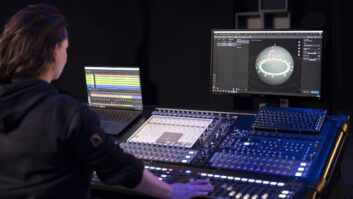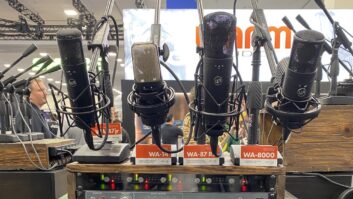
If you need to edit audio as flexibly as you edit MIDI, you’re going to love Celemony’s Melodyne. It can correct the pitch of vocals with surgical accuracy, transpose polyphonic tracks all but undetectably, time-stretch beats without introducing the slightest stutter or add swing to a percussion track — all with a few quick mouse-clicks.
Version 3 is not a radical departure from previous releases, but numerous refinements have been added to the user interface and to the audio analysis algorithms. A 2001 review of V. 1 (read it at www.mixonline.com) gives a good overview of the software’s features, but most of the limitations noted in that review are long gone. Unlike some pitch-correction plug-ins, Melodyne doesn’t work in real time, but the Melodyne Bridge plug-in (compatible with VST, RTAS, Audio Units and DirectX) makes shuttling audio tracks back and forth from your DAW a breeze.
SLICE AND DICE
When audio is loaded into Melodyne, the program analyzes it and displays the waveform as a series of “blobs” on a pitch/time grid, much like the piano-roll editor in a sequencer. I loaded a cello solo recorded a few months back, and Melodyne correctly identified not only the main notes but most of the quick grace-notes. If the analysis happens to lump together a few notes or mis-identify their pitches, a bit of hand-editing quickly sets things straight.
Melodyne lets you adjust the pitches of individual notes in microtonal increments, smooth out the pitch transitions between notes, increase or decrease the vibrato, and shorten or lengthen individual notes. With melodic material, you can move the formant frequencies of any note up or down without affecting the fundamental pitch.
The biggest difference between Melodyne editing and MIDI editing is that Melodyne’s tracks are always monophonic. You can import percussive or polyphonic material and transpose or time-stretch it, but individual notes within a chord can’t be pitch-shifted, and formant editing is not available for non-melodic tracks. I tried pitch-shifting a simple pop piano accompaniment and found that I could go up or down a minor third without changing the timbre too drastically.
Using the new macros in Version 3, you can select a track or any portion of that track and apply percentage-based pitch correction or rhythm quantization. I found that correcting the pitch of my cello solo 100 percent made it sound a bit clinical, so I dialed the correction back to 70 percent, leaving a bit of lifelike give and take. My vibrato and other pitch nuances were unaffected by the correction.
With Melodyne, I was able to record a keeper solo for a new piece in a third of the time it would ordinarily take because I didn’t need to do five takes and then comp together a track that had no out-of-tune notes. Better yet, when I decided to change the chord progression, I didn’t need to re-record the solo to transpose a few notes to new pitches.
I loaded an acoustic drum loop into Melodyne and found that I could slow it from 100 bpm to 25 bpm without introducing any detectable flamming, buzzing or other artifacts. The cymbal decay sounded a little swishy, but that’s to be expected, seeing as the overtone activity within the cymbal sound was being slowed down.
MULTITRACKING
Melodyne’s multitrack features are handy mainly for copying and pasting solo lines and transposing the copies to create harmonies. As a DAW, the program has very little to offer. Basics such as markers, EQ, tempo changes, auto-punch, and Solo and Mute buttons are covered, but there’s no parameter automation.
A VST or Audio Units soft synth can be inserted to double an audio track by sending pitch information from the audio track to the instrument, but MIDI sequencing, per se, is not supported. A better option would be to use the Save Audio to MIDI command and import the audio track’s MIDI note data into a real sequencer. Melodyne can run as a ReWire host or client, so it’s worth considering as a host for Propellerhead Reason, which lacks audio tracks.
ON THE BRIDGE
When you insert the Melodyne Bridge in a channel strip in your DAW, Melodyne launches. Click the Transfer button and then play the track (or a portion of it), and it’s loaded into Melodyne. The next time you hit Play, the Bridge switches seamlessly from the DAW track to Melodyne in any region where audio has been transferred. I had to increase my audio buffer from 256 samples to 1,024 to prevent stuttering on playback, but the Bridge let me audition my edits in context with the music. To reduce CPU usage, I exported the audio from Melodyne and imported it into my DAW as a normal track.
MELLOW DYNAMIC
After using Melodyne on a few solo tracks, I wouldn’t want to live without it. I can concentrate on playing musically, not on getting my fingers in the right places and then laboriously comping together a track piece by piece. If you’re on a budget, I recommend Melodyne Uno ($199), which functions as a sample editor with no multitracking or Bridge plug-in. For pros, the workflow enhancements in the full package ($699) make it well worth the price.
Celemony, dist. by Music Marketing, 416/646-0900; www.celemony.com.
Jim Aikin writes regularly for Mix, Electronic Musician and other music magazines.







